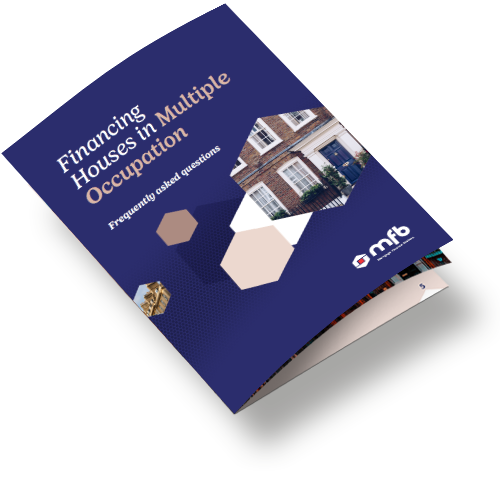HMO properties are no longer just for the experienced portfolio landlord. As lenders broaden their criteria, HMOs are becoming a more accessible property investment option, offering many benefits to interested investors.
What is an HMO?
A House in Multiple Occupancy (HMO) has three or more unrelated tenants who share amenities such as kitchens and bathrooms (commonly known as a ‘house share’). It is a popular option for student housing and young professionals wanting to live near work or commuter connections.
Why should you have an HMO in your portfolio?
HMOs are often only seen as an investment for very experienced landlords, as they are often considered more challenging to manage and have a higher financial risk than traditional vanilla buy to let properties. However, there are many overlooked benefits to having an HMO property in your buy to let portfolio, and we work every day with landlords who have had massive success with this type of property.
Yields
The main draw for HMOs is that they produce considerably higher yields than other types of buy to let property. Figures from 2022 show that the average yield for HMO property is 7.75%, 2.5% higher than vanilla buy to let property (5.25%).
If you’re looking to expand your property investment portfolio further, this increase in rental income can be very beneficial, potentially allowing you to purchase further property much sooner than with a vanilla property. A higher yield also helps mitigate the inevitable cost of maintenance work, which comes with any buy to let property.
Rental Voids
One of the main concerns we hear about HMOs is that tenant turnover can be higher than with vanilla investment property, exposing you to the risk of rental voids. For student landlords, this turnover is expected (and seasonal). However, it’s a fair argument that living in an HMO is often a stepping-stone for tenants before they can rent a whole property or purchase their own; therefore, tenant turnover can be a little higher than with vanilla property.
However, the impact of rental voids in an HMO can be spread over two or more other tenants, making them less financially significant and more manageable. With vanilla property, all rental income stops during void periods (or if the tenant falls into arrears). In contrast, HMOs enable you to continue receiving rent from other tenants, even if one room is unoccupied, which can alleviate much of the mental and financial stress for you as a landlord.
Location
Location is vital when it comes to HMO success. With demand continuing to outweigh supply for rented accommodation, particularly in large towns and cities, choosing the right location for your investment is vital. Many working professionals can’t afford to rent or buy a whole property on their own, and so will opt for shared house arrangements as room rent is usually lower than for an entire property.
Property within walking distance from a university campus will always be a good investment, as student demand in these areas is usually high. While most student households change over every summer, you’re likely to have the next tenants lined up by the previous January, if not earlier; such is the competition for desirable student accommodation. If you’re renting to young professionals, then transport links are a must, or town/city centre locations to make commuting and access to local amenities easy.
HMO Licencing
HMO licencing can appear complicated as the rules vary depending on the local authority. For some, properties with four or fewer tenants do not need a licence, but in others, they will. We recommend always checking with your local authority to see whether the property you wish to purchase will require a licence.
If the property you’re purchasing does require an HMO licence, these can sometimes take a while to come through. When you’re applying for your HMO mortgage, most lenders will only need to see proof that you’ve applied for the licence. However, if you are remortgaging your HMO, the lender will want to see a copy of the licence.
HMO Mortgages
HMO mortgages are becoming increasingly accessible, with more lenders regularly adding products to the market. While HMO rates are generally higher than those for vanilla buy to lets, increased market competition has decreased the difference, making them more affordable for landlords. Of course, given the current climate, rates are now rising across all mortgage products, so it’s worth speaking to a broker to see what options may be available to you. Competition between lenders on HMO products has also seen many specialist lenders introduce other incentives, such as no product fees, cashback, and free valuations.
Currently, interest rates for 75% LTV HMO mortgages start from 3.99% (two-year discounted variable) and 4.89% (two-year fixed) for individuals and limited companies. For five-year products, rates start from 4.49% (discounted variable) and 5.29% (fixed)*.
HMO Mortgage Criteria
HMOs have long only been an option for the more experienced buy to let landlord, but things are changing. While most lenders do still require anything from one to three years buy to let landlord experience, we have access to some that only require six months or even no previous buy to let experience at all!
Just as with regular buy to let properties, most lenders are more concerned with what the security is for the property and whether the rental income will be enough to meet the mortgage repayments plus more to cope with void periods and essential maintenance.
Speak to an expert mortgage broker
If you’d like to discuss which HMO buy to let mortgages rates may be available to you, please do not hesitate to contact us on 0345 345 6788, or by submitting an enquiry here.
